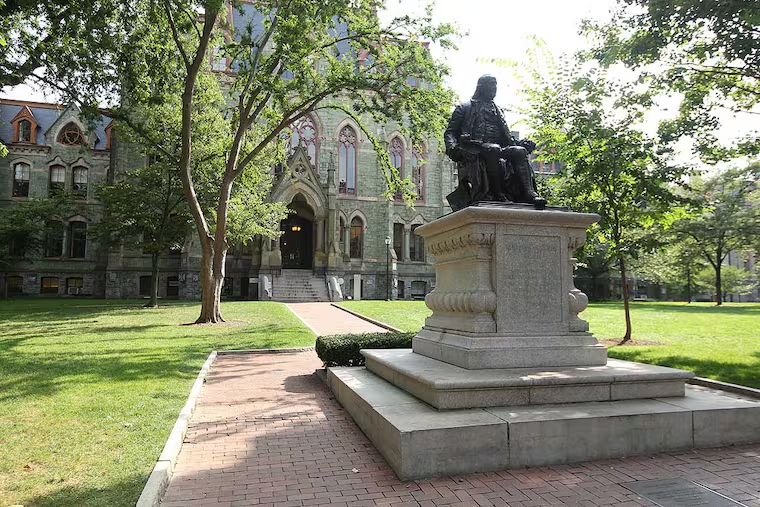Will college students rally against inferior remote teaching? | Opinion
Like several other schools around the country, Penn has invited students back to the dorms for the spring semester but will continue to teach mostly online.

In 1925, student delegates from 20 colleges gathered at Wesleyan University to discuss an urgent topic: poor undergraduate teaching. Speaker after speaker denounced their classes as dull, disorganized, and impersonal. They also heard a rousing keynote address from Columbia University historian James Harvey Robinson, who implored them to “stand up and kick” against bad instruction.
Where is that kind of student protest right now?
We’re in the midst of a pandemic, which has moved millions of college students from their classrooms to their laptops. In an October survey of over 3,000 U.S. and Canadian students, nearly 70% said they were not learning as much online as they did in regular classes. While students have organized on several campuses for tuition refunds during the pandemic, we haven’t seen much collective demand for safe in-person teaching.
Part of the reason might be the online medium itself, which can inhibit sustained and organized protest. But at Penn, where I teach, I wonder how many students are willing to accept inferior instruction on Zoom so long as they also get to hang out with their friends.
Like several other schools around the country, Penn has invited students back to the dorms for the spring semester but will continue to teach most classes online. According to an Oct. 30 message sent to the university community, “students who choose to return to campus will be able to engage in a variety of small-group interactions [and] extracurricular activities.” For the most part, however, they will not engage with their professors in actual classrooms.
And that’s not because in-person classes pose a serious risk of infection, as many people still think. In a study of 70,000 undergraduates this fall at Indiana University, researchers found that students who attended in-person classes were actually less likely to be infected with COVID-19 than those who studied virtually.
It’s not hard to see why. Exposures commonly happen at off-campus parties and other social events, where students aren’t being observed by campus authorities. But in the classroom, it’s easy to enforce masking and other safety measures.
To be sure, some courses are simply too large to allow for proper distancing between students. And some professors might have preexisting health conditions or other circumstances that prevent them from teaching in person. But the rest of us can certainly teach in the classroom if our students demand it.
Will they? After the pandemic began, students at over 100 schools filed lawsuits asking for tuition refunds on the grounds that “remote online learning cannot provide the same value as in-person education,” as one petitioner claimed. Several of these suits have already been dismissed by the courts, which have historically deferred to universities on academic issues.
But students haven’t. In the 1920s, they condemned overcrowded classes and dry lectures. They also demanded — and won — smaller seminars and tutorials. The pattern would repeat itself in the 1960s, when protesters denounced poor teaching alongside the war in Vietnam and racism at home.
“It is not that college boys have ceased to have a good time on the campus,” a newspaper reporter wrote, observing the 1925 student conference at Wesleyan. “It is rather that an increasing number of them are wondering what college is all about and why they are there.”
That’s the big question we’ll confront next term, as thousands of students return to campus: Why are they there? Some students have told me they want to return to campus to have a good time, just like their counterparts a century ago. And so did I, when I was their age. But I also wanted to learn as much as I could from my professors, who were a real presence — not just a set of Zoom screens — in my life.
This semester, I taught students in faraway places like Ohio and California; next term, most of them will be a few blocks away. But I’ll still be teaching them on my computer unless they stand up and kick. I want to teach them in person. The elephant in the classroom is what they want, and whether they will raise their voices to get it.
Jonathan Zimmerman teaches education and history at the University of Pennsylvania. He is the author of “The Amateur Hour: A History of College Teaching in America,” which was published this fall by Johns Hopkins University Press.